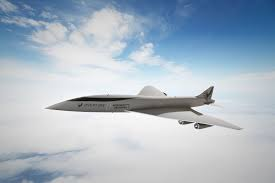An example of the upersonic technology used in warplanes is the F-16 warplanes.
What is sound? What is the
speed of sound?
Sound is the name given to the periodic pressure changes that living things
perceive with their hearing organs. If you ask what is its physical dimension,
we can say that it is a simple mechanical disorder that occurs in sound, solid
liquid or gas environments…
Molecules in a substance
vibrate to create sound.
Sound produced by vibration is actually a form of energy. Sound is measured
in decibels and is briefly represented as db. The sound power of a normal
person is between 50 and 60 decibels. Any sound above this disturbs us. For
example, loud noise produces 90 decibels, and while the missile is taking off,
it produces 120 decibels.
The speed of propagation after sound is produced is called the speed of
sound. Based on normal sea level and a temperature of 20 degrees Celsius, the
speed of sound is 343.2 meters in 1 second. It does not change according to the
frequencies and the sound is at the same speed at every frequency. In short,
you can see the speed of sound as 340 m/s, 1,087 ft/s, 761 mph or 1,225 km/h.
The speed of sound changes according to air temperature and density. For
example, while the speed of sound decreases in cold air, it accelerates in warm
air. As the sunlight warms the earth during the day, the sound that travels in
the form of waves is directed upwards. At night, the temperature drops and the
sound waves travel farther and down.
If the wind comes from behind, when you shout with it, the sound moves
towards the ground. If you shout against the wind, the sound goes upwards. Due
to the structure of the water in the sea, a reflective surface is formed and
the sound can travel up to 4 to 5 kilometers in the sea.
If the speed of sound produced by a moving source exceeds the velocity of
propagation, a sudden burst of sound occurs. In this case, sound waves begin to
propagate into the conical area like a beam. This is called shock waves.
Mach number is obtained by dividing the speed of sound created by an object
by the speed of sound in the environment. Technically speaking, the speed of
sound is expressed in Mach number.
The first human to exceed the speed of sound is Chuck Yeager.
The term supersonic is used to denote sound speeds above the speed of sound
(Mach 1). If this device continues to go faster than sound for a long time, it
is called supersonic devices. For example, the F-16 is a supersonic aircraft,
as supersonic technology is most often used for warplanes. It is also a
supersonic car in the first Bloodhound SSC.
Who invented the first sonic boom?
During the period of the famous Space Race between the USA and the USSR
(Russia) that began in 1955, there were "human computers" that NASA
hired to calculate flight trajectories, thrust and rocket dynamics. One of them
was Christine Darden, who joined the ranks in 1967. Eight years later, Darden
embarked on applying her mathematical skills to engineering, becoming one of
the very few female engineers at NASA's Langley Research Center.
Christine Darden was tasked with a project examining sonic boom
minimization. At that time, modern computers were just beginning to be used. In
this way, Christine Darden, using her mathematical skills, developed computer
programs that calculate the effects of sonic booms.
While working full-time on the project, she was also pursuing a doctorate
in mathematics and engineering sciences at George Washington University in
Virginia. In her thesis, she studied the environmental effects of supersonic
(faster than sound) passenger aircraft, drawing on her work at NASA.
If an object, such as an airplane, moves faster than sound, it creates
compressed air waves on the ground that are heard as "sound booms". These
explosions can be so violent that they can damage the structures below them and
even shatter glass.
NASA teams looking to assess the risks of supersonic vehicles used wind
tunnels to simulate explosions. Christine Darden set out to develop a computer
program that calculates the effects of explosions. Comparing Darden's data with
model experiments, both yielded the same results, but Darden's method was
cheaper and more efficient than creating a model simulation.
Unfortunately, NASA stopped the supersonic passenger plane project, but
Christine Darden's work was not in vain. Realizing that her work could be
useful in military aircraft, Durden completed her research on sonic booms and
was awarded her PhD in engineering in 1983.
Born in 1942, Christine Darden has 3 children and is still alive. Darden, who pioneered airplanes that exceed the speed of sound, still follows the developments.

Comments
Post a Comment